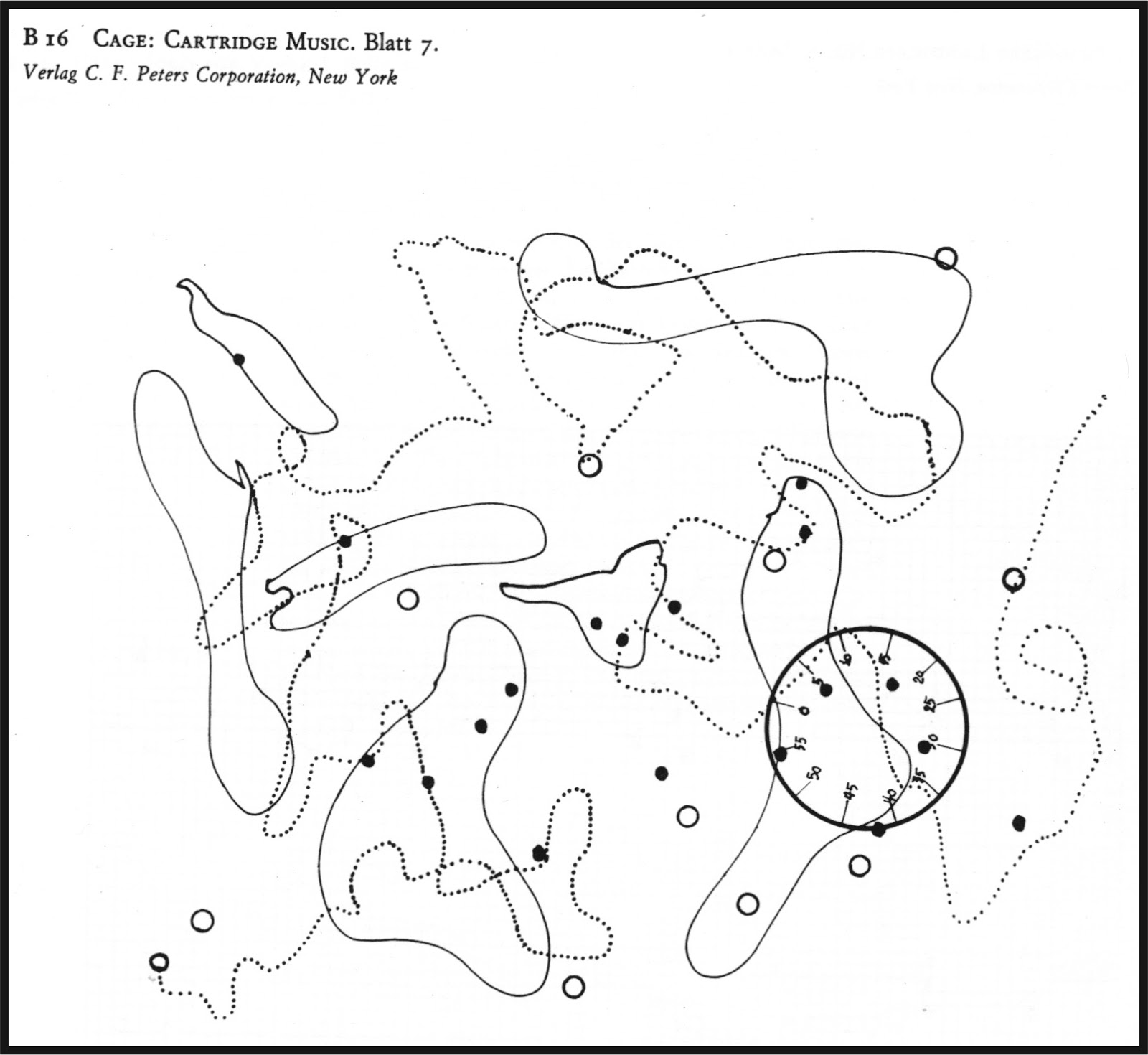Talk:Graphic Scores-avant-garde
Revision as of 18:23, 24 January 2017 by Andre Castro (talk | contribs)
- description of sound gestures s such noise, extended playing techniques (e.g. rubbing fingers on skin, bowing a cymbal, processing the sound, etc) that fall outside the scope of western musical notation
- description of the instrument configurations and setting of an instrument (e.g. the patch of modular synthesizer or preparation of a piano)
- capacity to change the form of the composition significantly, with each interpretation
- capacity to change the roles and responsibilities of composer and interpret
John Cartridge Music (1960)
Score elements:
- 1 page of instructions,
- 4 transparent sheets: one with points, one with circles, another with a circle that looks like a clock face, and a fourth with a dotted curved line with a circle at the end of it
- 20 pieces of white paper with shapes on them.
Placement: superimpose the transparencies over the sheet with shapes to get a determination for playing. You may place the sheets randomly, one on top of the other, only making sure that the circle at the end of the dotted line contains a point outside a shape and that the dotted line intersects at least one point within a shape.
Instruction: Curved dotted line: is read from beginning to end (marked with a circle)
Points and circles represent events in the performance:
- when intersected by dotted line
- points are:
- sounds on (inside a shape) corresponding to that shape
- sounds off (outside a shape) the cartridge, meaning sounds made by other means than those made by the objects in the cartridges
- circles: mark changes of amplitude (inside a shape) or tone (outside a shape)
- circle boundary of a shape: change of object
- points are:
Clock face intersections by dotted line:
- enter: starting time.
- exit: ending time.

 </nowiki>
</nowiki>
http://www.jaimeoliver.pe/recipes/archaeology/cartridge
https://www.youtube.com/watch?v=H_qgsOLnmkk&t=5s
